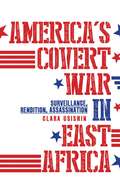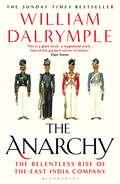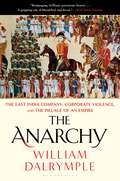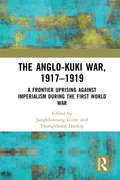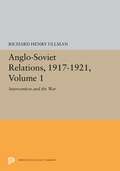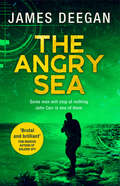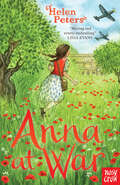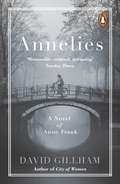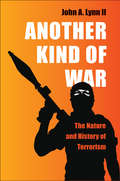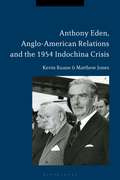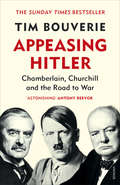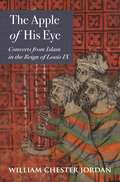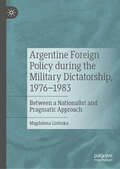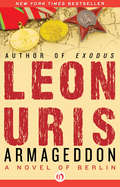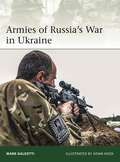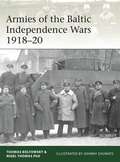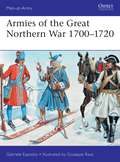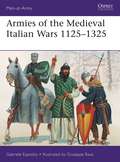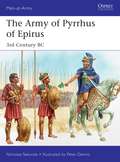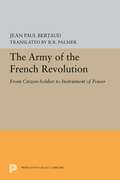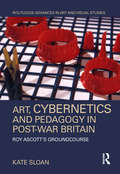- Table View
- List View
America's Covert War in East Africa: Surveillance, Rendition, Assassination (PDF)
by Clara UsiskinClara Usiskin has spent eight years investigating the 'War on Terror' and its effects in the East and Horn of Africa, documenting hundreds of cases of rendition, secret detention and targeted killings. As a result of her work exposing abuses carried out by regional governments and their international partners, Clara was deported from Kenya and Uganda and is currently persona non grata in both countries. Her book sets out the historical background to today's covert war, including the early Somali jihads and British repression in colonial Kenya, through to the 1998 US Embassy Bombings in Nairobi and Dar es Salaam, and President Clinton's early rendition programme. America's Covert War in East Africa then looks at the US Military's new Africa Command, with its emphasis on counterterrorism, alongside increasing use of targeted killings by security forces in the region, and continued renditions and secret detention. Finally, Usiskin investigates the shorter and longer term consequences of such intensive militarisation, and the proliferation of surveillance and other technologies of control in East Africa and its surrounding waters, focusing in particular on their impact on vulnerable ethnic and religious groups in a highly volatile region.
The Anarchy: The Relentless Rise of the East India Company
by William DalrympleIn August 1765 the East India Company defeated the young Mughal emperor and forced him to establish in his richest provinces a new administration run by English merchants who collected taxes through means of a ruthless private army – what we would now call an act of involuntary privatisation.The East India Company's founding charter authorised it to 'wage war' and it had always used violence to gain its ends. But the creation of this new government marked the moment that the East India Company ceased to be a conventional international trading corporation dealing in silks and spices and became something much more unusual: an aggressive colonial power in the guise of a multinational business. In less than four decades it had trained up a security force of around 200,000 men – twice the size of the British army – and had subdued an entire subcontinent, conquering first Bengal and finally, in 1803, the Mughal capital of Delhi itself. The Company's reach stretched until almost all of India south of the Himalayas was effectively ruled from a boardroom in London.The Anarchy tells the remarkable story of how one of the world's most magnificent empires disintegrated and came to be replaced by a dangerously unregulated private company, based thousands of miles overseas in one small office, five windows wide, and answerable only to its distant shareholders. In his most ambitious and riveting book to date, William Dalrymple tells the story of the East India Company as it has never been told before, unfolding a timely cautionary tale of the first global corporate power.
The Anarchy: The East India Company, Corporate Violence, and the Pillage of an Empire
by William DalrympleFrom the bestselling author of Return of a King, the story of how the East India Company took over large swaths of Asia, and the devastating results of the corporation running a country.In August 1765, the East India Company defeated the young Mughal emperor and set up, in his place, a government run by English traders who collected taxes through means of a private army. The creation of this new government marked the moment that the East India Company ceased to be a conventional company and became something much more unusual: an international corporation transformed into an aggressive colonial power. Over the course of the next 47 years, the company's reach grew until almost all of India south of Delhi was effectively ruled from a boardroom in the city of London.The Anarchy tells one of history's most remarkable stories: how the Mughal Empire-which dominated world trade and manufacturing and possessed almost unlimited resources-fell apart and was replaced by a multinational corporation based thousands of miles overseas, and answerable to shareholders, most of whom had never even seen India and no idea about the country whose wealth was providing their dividends. Using previously untapped sources, Dalrymple tells the story of the East India Company as it has never been told before and provides a portrait of the devastating results from the abuse of corporate power.
The Anglo-Kuki War, 1917–1919: A Frontier Uprising against Imperialism during the First World War
by Jangkhomang Guite Thongkholal HaokipThis book explores the Kuki uprising against the British Empire during the First World War in Northeast frontier of India (then Assam-Burma frontier). It underlines how of the three-year war (1917–1919), spanning over 6,000 square miles, is crucial to understanding present-day Northeast India. The essays in the volume examine several aspects of the war, which had far-reaching consequences for the indigenous population as well as for British attitudes and policy towards the region – including military strategy and tactics, violence, politics, identity, institutions, gender, culture, and the frontier dimensions of the First World War itself. The volume also looks at how the conflict affected the larger dynamics of the region within Asia, and its relevance in world politics beyond the Great War. Drawing on archival sources, extensive fieldwork and oral histories, the volume will be a significant contribution to comprehending the complex geopolitics of the region. It will be of great interest to scholars and researchers of South and Southeast Asian Studies, area studies, modern history, military and strategic studies, insurgency and counterinsurgency studies, tribal warfare and politics.
The Anglo-Kuki War, 1917–1919: A Frontier Uprising against Imperialism during the First World War
by Jangkhomang Guite Thongkholal HaokipThis book explores the Kuki uprising against the British Empire during the First World War in Northeast frontier of India (then Assam-Burma frontier). It underlines how of the three-year war (1917–1919), spanning over 6,000 square miles, is crucial to understanding present-day Northeast India. The essays in the volume examine several aspects of the war, which had far-reaching consequences for the indigenous population as well as for British attitudes and policy towards the region – including military strategy and tactics, violence, politics, identity, institutions, gender, culture, and the frontier dimensions of the First World War itself. The volume also looks at how the conflict affected the larger dynamics of the region within Asia, and its relevance in world politics beyond the Great War. Drawing on archival sources, extensive fieldwork and oral histories, the volume will be a significant contribution to comprehending the complex geopolitics of the region. It will be of great interest to scholars and researchers of South and Southeast Asian Studies, area studies, modern history, military and strategic studies, insurgency and counterinsurgency studies, tribal warfare and politics.
Anglo-Soviet Relations, 1917-1921, Volume 1: Intervention and the War (Princeton Legacy Library #5378)
by Richard Henry UllmanIn an intriguing work based largely on new sources, Richard H. Ullman shows how the British government--the politicians, civil servants, military and naval officers--dealt with the problem of Russia during the critical period bewtween the Bolshevik Revolution in November 1917 and Britain's de facto recognition of the Soviet government in March 1921.Volume 1 describes the tragic misunderstandings and desperate hopes of the British in the troubled year before the Armistice, which stands as a watershed in the history of Anglo-Soviet policy. As diplomacy failed, British forces found themselves fighting not only in North Russia but in the Caucasus and on the frontiers of India. The second volume, to be published later, will cover the story to 1921. Dr. Ullman's exciting portrayal of these evetns is a companion work to George Kennan's several-volume study of the same period, "Soviet-American Relations, 1917-1920."Originally published in 1961.The Princeton Legacy Library uses the latest print-on-demand technology to again make available previously out-of-print books from the distinguished backlist of Princeton University Press. These editions preserve the original texts of these important books while presenting them in durable paperback and hardcover editions. The goal of the Princeton Legacy Library is to vastly increase access to the rich scholarly heritage found in the thousands of books published by Princeton University Press since its founding in 1905.
The Angry Sea (John Carr #2)
by James Deegan‘Brutal and brilliant’ Tom Marcus, author of SOLDIER SPY
Anna At War
by Helen PetersNominated for the 2020 CILIP Carnegie MedalThe Times Children's Book of the WeekA captivating wartime story of bravery, adventure and hope.As life for German Jews becomes increasingly perilous, Anna's parents put her on a train leaving for England. But the war follows her to Kent, and soon Anna finds herself caught up in a web of betrayal and secrecy. How can she prove whose side she's on when she can't tell anyone the truth? But actions speak louder than words, and Anna has a dangerous plan... A brilliant and moving wartime adventure from the author of Evie's Ghost. Cover illustration by Daniela Terrazzini."Because I believed in Anna, her war came alive for me. Her struggle, her bravery, all those things were completely real and I read the book overnight, unable to put it down. Magnificent, brilliant, heartbreaking." - Fleur Hitchcock, author of Murder in Midwinter"A fast-paced adventure, whose elegant prose and cliffhanger chapters should keep even less confident readers gripped to the thrilling end." - Emily Bearn, The Daily Telegaph"It's a tale of bravery and loss that Helen Peters (Evie's Ghost) sets out with the light touch that only rigorous research allow.... Peters tells Anna's story of escape with great humanity, and this novel is an excellent way to whet young appetites for classics such as When Hitler Stole Pink Rabbit by Judith Kerr and Carrie's War by Nina Bawden." - Alex O'Connell, The Times, Children's Book of the Week"Anna at War is a gripping, moving piece of historical fiction." - Imogen Russell Williams, The Guardian"Moving and utterly enthralling" - Lissa Evans"Helen Peters balances adventure and intrigue with this emotional coming-of-age story." - Emma Dunn and Sarah Mallon, The Scotsman
Annelies: A Novel of Anne Frank
by David GillhamA breathtaking new novel that asks the question: what if Anne Frank survived the Holocaust?It is 1945, and Anne Frank is sixteen years old. Having survived the concentration camps but lost her mother and sister, she reunites with her father, Pim, in newly liberated Amsterdam. But Anne is adrift, haunted by the ghost of her sister, Margot, and the atrocities they experienced. Her beloved diary is gone, and her dreams of becoming a writer seem distant and pointless now. As Anne struggles to build a new life for herself, she grapples with overwhelming grief, heartbreak, and ultimately forgiveness. In this masterful story of trauma and redemption, David Gillham explores with breath-taking empathy the woman - and the writer - Anne Frank might have become.
Another Kind of War: The Nature and History of Terrorism
by John A. LynnAn accessible and comprehensive history of terrorism from ancient times to the present In the years since 9/11, there has been a massive surge in interest surrounding the study of terrorism. This volume applies distinguished military historian John Lynn’s lifetime of research and teaching experience to this difficult topic. As a form of violence that implies the threat of future violence, terrorism breeds insecurity, vulnerability, and a desire for retribution that has far-reaching consequences. Lynn distinguishes between the paralyzing effect of fear and the potentially dangerous and chaotic effects of moral outrage and righteous retaliation guiding counterterrorism efforts. In this accessible and comprehensive text, Lynn traces the evolution of terrorism over time, exposing its constants and contrasts. In doing so, he contextualizes this violence and argues that a knowledge of the history and nature of terrorism can temper its psychological effects, and can help us more accurately and carefully assess threats as well as develop informed and measured responses.
Anthony Eden, Anglo-American Relations and the 1954 Indochina Crisis
by Kevin Ruane Matthew JonesIn the spring of 1954, after eight years of bitter fighting, the war in Vietnam between the French and the communist-led Vietminh came to a head. With French forces reeling, the United States planned to intervene militarily to shore-up the anti-communist position. Turning to its allies for support, first and foremost Great Britain, the US administration of Dwight D. Eisenhower sought to create what Secretary of State John Foster Dulles called a “united action” coalition. In the event, Winston Churchill's Conservative government refused to back the plan. Fearing that US-led intervention could trigger a wider war in which the United Kingdom would be the first target for Soviet nuclear attack, the British Foreign Secretary, Anthony Eden, was determined to act as Indochina peacemaker – even at the cost of damage to the Anglo-American “special relationship”.In this important study, Kevin Ruane and Matthew Jones revisit a Cold War episode in which British diplomacy played a vital role in settling a crucial question of international war and peace. Eden's diplomatic triumph at the 1954 Geneva Conference on Indochina is often overshadowed by the 1956 Suez Crisis which led to his political downfall. This book, however, recalls an earlier Eden: a skilled and experienced international diplomatist at the height of his powers who may well have prevented a localised Cold War crisis escalating into a general Third World War.
Appeasing Hitler: Chamberlain, Churchill and the Road to War
by Tim Bouverie'Appeasing Hitler is an astonishingly accomplished debut' ANTONY BEEVOR‘One of the most promising young historians to enter our field for years’ MAX HASTINGS‘Brilliant and sparkling … reads like a thriller. I couldn’t put it down’ PETER FRANKOPANOn a wet afternoon in September 1938, Neville Chamberlain stepped off an aeroplane and announced that his visit to Hitler had averted the greatest crisis in recent memory. It was, he later assured the crowd in Downing Street, ‘peace for our time’. Less than a year later, Germany invaded Poland and the Second World War began.Appeasing Hitler is a compelling new narrative history of the disastrous years of indecision, failed diplomacy and parliamentary infighting that enabled Nazi domination of Europe. Beginning with the advent of Hitler in 1933, it sweeps from the early days of the Third Reich to the beaches of Dunkirk. Bouverie takes us into the backrooms of 10 Downing Street and Parliament, where a small group of rebellious MPs, including the indomitable Winston Churchill, were among the few to realise that the only choice was between ‘war now or war later’. And we enter the drawing rooms and dining clubs of fading imperial Britain, where Hitler enjoyed surprising support among the ruling class and even some members of the Royal Family.Drawing on deep archival research, including previously unseen sources, this is an unforgettable portrait of the ministers, aristocrats and amateur diplomats who, through their actions and inaction, shaped their country's policy and determined the fate of Europe. Both sweeping and intimate, Appeasing Hitler is not only eye-opening history but a timeless lesson on the challenges of standing up to aggression and authoritarianism – and the calamity that results from failing to do so.
The Apple of His Eye: Converts from Islam in the Reign of Louis IX (Jews, Christians, And Muslims From The Ancient To The Modern World Ser. #4)
by William Chester JordanThe thirteenth century brought new urgency to Catholic efforts to convert non-Christians, and no Catholic ruler was more dedicated to this undertaking than King Louis IX of France. His military expeditions against Islam are well documented, but there was also a peaceful side to his encounter with the Muslim world, one that has received little attention until now. This splendid book shines new light on the king’s program to induce Muslims—the “apple of his eye”—to voluntarily convert to Christianity and resettle in France. It recovers a forgotten but important episode in the history of the Crusades while providing a rare window into the fraught experiences of the converts themselves.William Chester Jordan transforms our understanding of medieval Christian-Muslim relations by telling the stories of the Muslims who came to France to live as Christians. Under what circumstances did they willingly convert? How successfully did they assimilate into French society? What forms of resistance did they employ? In examining questions like these, Jordan weaves a richly detailed portrait of a dazzling yet violent age whose lessons still resonate today.Until now, scholars have dismissed historical accounts of the king’s peaceful conversion of Muslims as hagiographical and therefore untrustworthy. Jordan takes these narratives seriously—and uncovers archival evidence to back them up. He brings his findings marvelously to life in this succinct and compelling book, setting them in the context of the Seventh Crusade and the universalizing Catholic impulse to convert the world.
The Apple of His Eye: Converts from Islam in the Reign of Louis IX
by William Chester JordanThe thirteenth century brought new urgency to Catholic efforts to convert non-Christians, and no Catholic ruler was more dedicated to this undertaking than King Louis IX of France. His military expeditions against Islam are well documented, but there was also a peaceful side to his encounter with the Muslim world, one that has received little attention until now. This splendid book shines new light on the king’s program to induce Muslims—the “apple of his eye”—to voluntarily convert to Christianity and resettle in France. It recovers a forgotten but important episode in the history of the Crusades while providing a rare window into the fraught experiences of the converts themselves.William Chester Jordan transforms our understanding of medieval Christian-Muslim relations by telling the stories of the Muslims who came to France to live as Christians. Under what circumstances did they willingly convert? How successfully did they assimilate into French society? What forms of resistance did they employ? In examining questions like these, Jordan weaves a richly detailed portrait of a dazzling yet violent age whose lessons still resonate today.Until now, scholars have dismissed historical accounts of the king’s peaceful conversion of Muslims as hagiographical and therefore untrustworthy. Jordan takes these narratives seriously—and uncovers archival evidence to back them up. He brings his findings marvelously to life in this succinct and compelling book, setting them in the context of the Seventh Crusade and the universalizing Catholic impulse to convert the world.
Argentine Foreign Policy during the Military Dictatorship, 1976–1983: Between a Nationalist and Pragmatic Approach
by Magdalena LisińskaThis book examines Argentine foreign policy under the military dictatorship from 1976–1983, also known as the National Reorganization Process. It brings together case studies on the most distinctive decisions and key issues in the regime’s foreign relations, including the international response to human rights violations, the dispute with Chile over the Beagle Channel, covert operations in Central America, the Argentine nuclear program, and the Falklands War. Lisińska examines the influence of ideological factors on foreign policy decisions, highlighting the relationship between the nationalism shaping the military’s policy goals and its pragmatic approach to achieving them.
The Arisaka Rifle (Weapon #70)
by Bill HarrimanEntering service in 1897, the Arisaka family of bolt-action rifles armed Japanese troops and others through two world wars and many other conflicts, including the Russo-Japanese War of 1904–05. Issued in long and short versions – the latter for cavalry and specialists – the Type 30 was the first main Arisaka model, arming Imperial Japan's forces during the Russo-Japanese War, though after the war it was refined into the Type 38, which would still be in use in 1945. The main Arisaka rifle of World War II though was the Type 99. Lighter and more rugged than the US M1903 Springfield rifle it would face in the initial battles in the Pacific, it was produced in four main variants, including a sniping model and a take-down parachutist's rifle. Featuring full-colour artwork as well as archive and close-up photographs, this is the absorbing story of the rifles arming Imperial Japan's forces, from the trenches of Mukden in 1905 to the beaches of Okinawa 40 years later.
Armageddon: A Novel Of Berlin
by Leon UrisIn Berlin at the end of World War II, an American Army officer bears witness to the aftermath of one historic tragedy and the rise of another. Captain Sean O'Sullivan distinguishes himself as a courageous soldier in the closing days of World War II, but what comes next tests his deepest reserves of strength and conviction. Sent to oversee the rebuilding of Berlin, O'Sullivan is exposed to the horrific truths of the Holocaust, a shattered and defeated society, and the new threat of Soviet power as the Iron Curtain begins to shadow the city. When Soviet forces blockade Berlin and the airlift begins, O'Sullivan is faced with profound moral dilemmas in an increasingly complicated world. Armageddon is one of the great fictional portrayals of Europe in the earliest days of the Cold War.
Armies of Russia's War in Ukraine (Elite #228)
by Mark GaleottiIn February 2014, street protests in Kiev and other Ukrainian cities led to the ousting of the Russian-backed President Yanukovych. The so-called Euromaidan Revolution saw many changes to Ukraine's constitution, but the violent reaction in the east and south of the country led to armed counter-revolution, unofficially backed by Russia.This conflict is the essential example of Russia's new policy of 'hybrid warfare', which blends propaganda, misinformation, and the deployment of 'deniable' Special Forces and regular troops alongside proxies and mercenaries to achieve its strategic ends. Using his extensive contacts in both Russia and Ukraine, and access to a mass of official and unofficial sources, Mark Galeotti presents a thorough and intriguing primer on all the forces involved in the ongoing conflict in Ukraine. Supported by specially commissioned artwork, he analyses both the progress of the war, and what it teaches us about Russia's current military capabilities.
Armies of the Baltic Independence Wars 1918–20 (Elite #227)
by Nigel Thomas Toomas BoltowskyImmediately following the end of World War I, amid the collapse of the German, Austro-Hungarian and Russian Empires, bitter fighting broke out in the Baltic region as Poland, Finland, Estonia, Latvia and Lithuania struggled for their independence, and Red and White Russian armies began their civil war. There were also German forces still active in what had been the northern end of Germany's Eastern Front. This book offers a concise but detailed introduction to this whole theatre of war, focusing on the Estonian, Latvian, Lithuanian and relevant German and Russian forces, plus Finnish, Danish and Swedish contingents. For each region there is a detailed map as well as meticulous orders-of-battle and insignia charts. Detailed for the first time in the English language, this fascinating book concisely tells the story of the birth of these Baltic nation states.
Armies of the Great Northern War 1700–1720 (Men-at-Arms #529)
by Gabriele EspositoThe Great Northern War was a long series of campaigns in which Russia, linked with several other countries in temporary alliances, confronted and eventually replaced Sweden as the predominant power in Northern Europe. While contemporary with the Duke of Marlborough's pivotal campaigns against France, the Great Northern War was in fact more decisive, since it reshaped the Northern European power balance up to the eve of the Napoleonic Wars. It began with a series of astonishing Swedish victories lead by King Charles XII, from Denmark to Poland and deep into Germany. But Peter the Great of Russia showed steadfast determination, and Charles overreached himself when he invaded Russia in 1708; the Russians adopted classic 'scorched earth' tactics until they could destroy the Swedish army at Poltava in 1709, one of the most overwhelming victories in history. Nevertheless, Sweden continued to fight, and frequently win, in Germany, Denmark and Norway, until Charles's death in battle in 1718, though the war itself did not conclude until 1721.This study explores, in detail, the numerous armies and complex alliances engaged in the war for Northern European dominance. Containing accurate full-colour artwork and unrivalled detail, Armies of the Great Northern War offers a vivid insight into the troops which battled for control of the North.
Armies of the Medieval Italian Wars 1125–1325 (Men-at-Arms #523)
by Giuseppe Rava Gabriele EspositoThe great powers of medieval Europe fought continuously in the Italian peninsula between the 12th and 14th centuries as they sought to expand their territory. Invading armies from Germany – the Holy Roman Empire – saw the creation of the defensive Lombard League of northern Italian city-states. These struggles resulted in conflicts between rival confederacies, which in turn proved to be the catalysts for developments in organisation and tactics. Italian urban militias became better organised and equipped, the Imperial armies went from being mostly German to multi-national forces, and both sides became reliant on mercenary forces to prosecute their wars. After the 1260s, France, relying mainly on armoured cavalry, and Spain, with their innovative light infantry, vied for control of southern Italy. On the seas, the great naval powers of Genoa, Pisa and Venice became fierce rivals, as they created great trading empires, bringing the treasures of the east into feudal Europe. Using detailed colour plates, this beautifully illustrated book describes the myriad of armies and navies that fought for control of Italy in the Middle Ages.
The Army of Pyrrhus of Epirus: 3rd Century BC (Men-at-Arms #528)
by Nicholas SekundaPyrrhus was one of the most tireless and famous warriors of the Hellenistic Age that followed the dispersal of Alexander the Great's brief empire. After inheriting the throne as a boy, and a period of exile, he began a career of alliances and expansion, in particular against the region's rising power: Rome. Gathering both Greek and Italian allies into a very large army (which included war-elephants), he crossed to Italy in 280 BC, but lost most of his force in a series of costly victories at Heraclea and Asculum, as well as a storm at sea. After a campaign in Sicily against the Carthaginians, he was defeated by the Romans at Beneventum and was forced to withdraw. Undeterred, he fought wars in Macedonia and Greece, the last of which cost him his life. Fully illustrated with detailed colour plates, this is the story of one of the most renowned warrior-kings of the post-Alexandrian age, whose costly encounters with Republican Rome have become a byword for victory won at unsustainable cost.
The Army of the French Revolution: From Citizen-Soldiers to Instrument of Power (Princeton Legacy Library #5444)
by Jean Paul BertaudJean-Paul Bertaud is the leading French authority on the army of the French Revolution, and La Revolution armee is the authortative treatment of the firest great national, patriotic, revolutionary, and mass army, engaged in what has been called the first total war: that between revolutionary France and the other European powers. The book is a successful attempt to integrate military history with social and political history and thereby to depict the army as a "school for the republic" that by subtle changes after 1795 made way for the Napoleonic regime. The distinguished historian R.R. Palmer presents the first translation of this work into English in a volume that will quickly become indispensable for French historians, historical sociologists, and political scientists interested in armies and revolutions.The theme of the book is suggested by its French title: "the Revolution armed." That is, the book is primarily about the Revolution, and specifically the Revolution in its relation to armed force. This revolution, and this army, activated the idea of the citizen-soldier exemplified by the ancient classical republics, and favored by Jean-jacques Rousseau and other eighteenth-century thinkers, but never before realized on so large and portentous a scale as in France in the 1790s. Jean-Paul Bertaud is Professor of Modern History at the University of Paris I (the Sorbonne). He has published widely in France on aspects of the French Revolution. R.R. Palmer is Professor Emeritus at Yale University and author of numerous books, including the two-volume The Age of the Democratic Revolution (1959 and 1964), Twelve Who Ruled (1941), and The Improvement of Humanity: Education and the French Revolution (1985), all published by Princeton University Press. He has translated many works from the French, most recently The Two Tocquevilles, Father and Son: Herve and Alexis de TOcqueville on the Coming of the French Revolution (Princeton, 1987).Originally published in 1988.The Princeton Legacy Library uses the latest print-on-demand technology to again make available previously out-of-print books from the distinguished backlist of Princeton University Press. These editions preserve the original texts of these important books while presenting them in durable paperback and hardcover editions. The goal of the Princeton Legacy Library is to vastly increase access to the rich scholarly heritage found in the thousands of books published by Princeton University Press since its founding in 1905.
Art, Cybernetics and Pedagogy in Post-War Britain: Roy Ascott’s Groundcourse (Routledge Advances in Art and Visual Studies)
by Kate SloanThis is the first full-length study about the British artist Roy Ascott, one of the first cybernetic artists, with a career spanning seven decades to date. The book focuses on his early career, exploring the evolution of his early interests in communication in the context of the rich overlaps between art, science and engineering in Britain during the 1950s and 1960s. The first part of the book looks at Ascott’s training and early work. The second park looks solely at Groundcourse, Ascott’s extraordinary pedagogical model for visual arts and cybernetics which used an integrative and systems-based model, drawing in behaviourism, analogue machines, performance and games. Using hitherto unpublished photographs and documents, this book will establish a more prominent place for cybernetics in post-war British art.
Art, Cybernetics and Pedagogy in Post-War Britain: Roy Ascott’s Groundcourse (Routledge Advances in Art and Visual Studies)
by Kate SloanThis is the first full-length study about the British artist Roy Ascott, one of the first cybernetic artists, with a career spanning seven decades to date. The book focuses on his early career, exploring the evolution of his early interests in communication in the context of the rich overlaps between art, science and engineering in Britain during the 1950s and 1960s. The first part of the book looks at Ascott’s training and early work. The second park looks solely at Groundcourse, Ascott’s extraordinary pedagogical model for visual arts and cybernetics which used an integrative and systems-based model, drawing in behaviourism, analogue machines, performance and games. Using hitherto unpublished photographs and documents, this book will establish a more prominent place for cybernetics in post-war British art.
